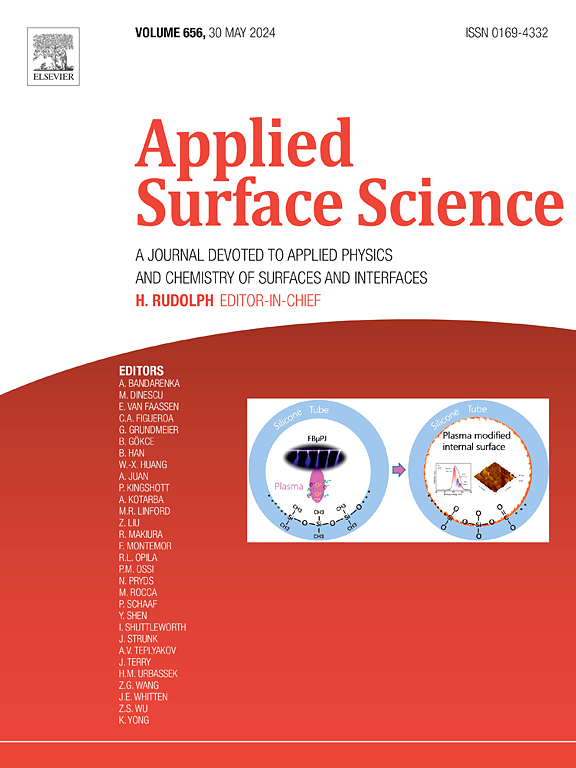了解氨硼烷脱氢过程中PtCo3O4催化剂的界面变化
IF 6.3
2区 材料科学
Q2 CHEMISTRY, PHYSICAL
引用次数: 0
摘要
氧化物的氧化还原性能在催化过程中起着至关重要的作用,可以在氧化物与金属的界面处进行修饰;因此,可以重构工作催化剂。本文揭示了在间歇氨硼烷分解过程中,金属载体相互作用对Pt与Co3O4界面的影响。将Co3O4与未修饰Pt进行了比较,并在不可还原氧化物(PtAl2O3)上对Pt进行了测试。采用动力学模型分析了其动力学特征,并用XRD、XPS、XAS、HR-TEM、CO吸附IR和原位ATR-IR对新鲜样品和使用过的样品进行了表征。联合研究揭示了PtCo3O4在反应条件下由于金属-载体相互作用而提高了反应速率及其重构,揭示了反应条件下形成的稳定活性位点的性质。实际上,在反应过程中,金属Pt重新分布,h向载体的溢出降低了Co3O4的表面,导致Pt团簇在Co(II)富集的Co3O4上。然后通过DFT获得了催化剂表面氧化还原性质的原子尺度的见解,并且PtCo3O4的改性归因于金属/氧化物界面上八面体Co(III)离子的容易还原,并且由于Pt向Co3O4的电荷转移而合理化。本文章由计算机程序翻译,如有差异,请以英文原文为准。

Understanding the interfacial changes of PtCo3O4 catalysts during the dehydrogenation of ammonia borane
The redox properties of oxides are critical in catalysis and can be modified at the interface between oxides and metals; as a consequence, working catalysts can be reconstructed. Herein, the influence of metal-support interactions on the interface between Pt and Co3O4 was disclosed during the batch ammonia borane decomposition. Co3O4 with and without decorating Pt were compared, and tested against Pt on a non-reducible oxide (PtAl2O3). The kinetic profiles were analysed using kinetic models, and both fresh and used samples were characterised using XRD, XPS, XAS, HR-TEM, CO adsorption by IR, and in situ ATR-IR. The combined study revealed an enhanced reaction rate for PtCo3O4 and its reconstruction under reaction conditions due to metal-support interaction, and disclosed the nature of the stable active sites formed under reaction conditions. Indeed, during the reaction, metallic Pt re-distributed, and the H-spillover to the support reduced the surface of Co3O4, leading to Pt clusters on Co(II)-enriched Co3O4. Atomic-scale insights on the surface redox properties of the catalysts were then obtained through DFT, and the modification of PtCo3O4 was attributed to the facile reduction of octahedral Co(III) ions at the metal/oxide interface, and rationalised as a consequence of charge transfer from Pt to Co3O4.
求助全文
通过发布文献求助,成功后即可免费获取论文全文。
去求助
来源期刊

Applied Surface Science
工程技术-材料科学:膜
CiteScore
12.50
自引率
7.50%
发文量
3393
审稿时长
67 days
期刊介绍:
Applied Surface Science covers topics contributing to a better understanding of surfaces, interfaces, nanostructures and their applications. The journal is concerned with scientific research on the atomic and molecular level of material properties determined with specific surface analytical techniques and/or computational methods, as well as the processing of such structures.
 求助内容:
求助内容: 应助结果提醒方式:
应助结果提醒方式:


